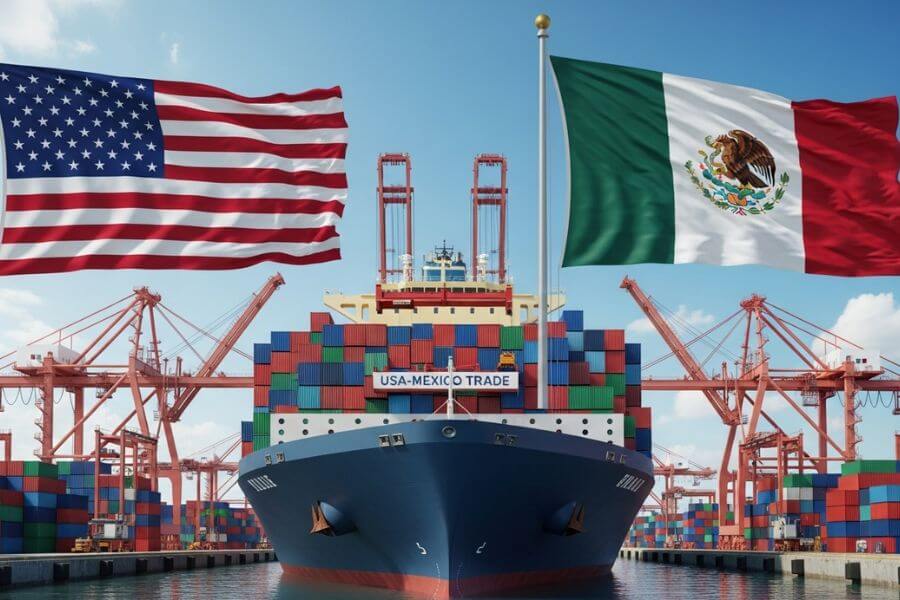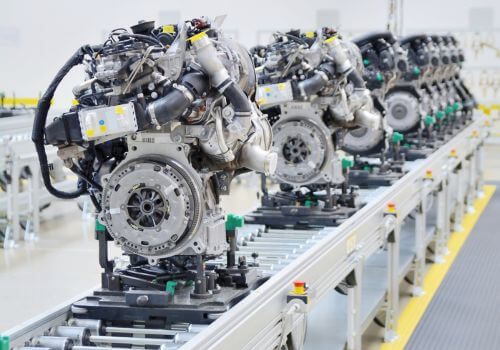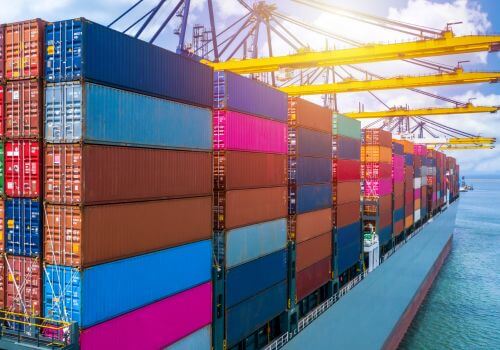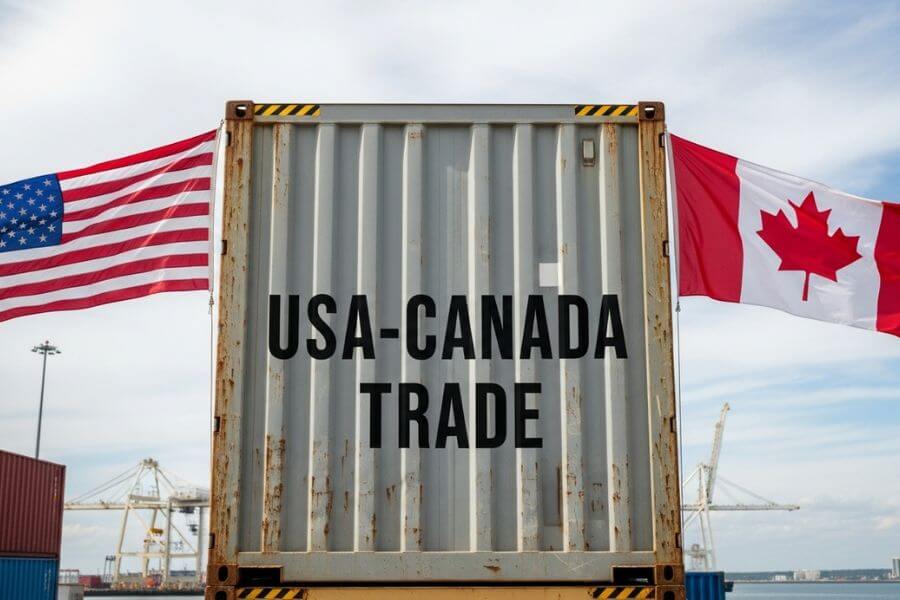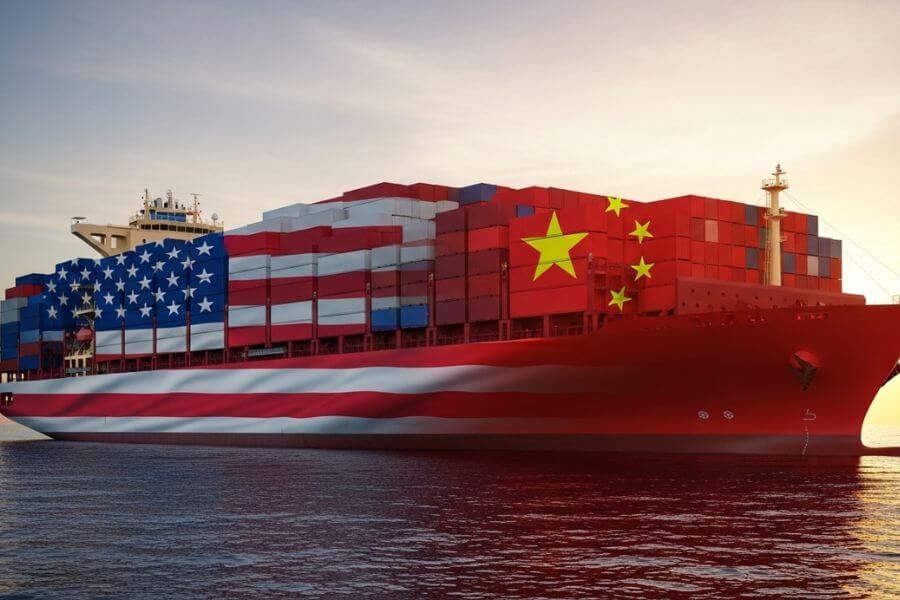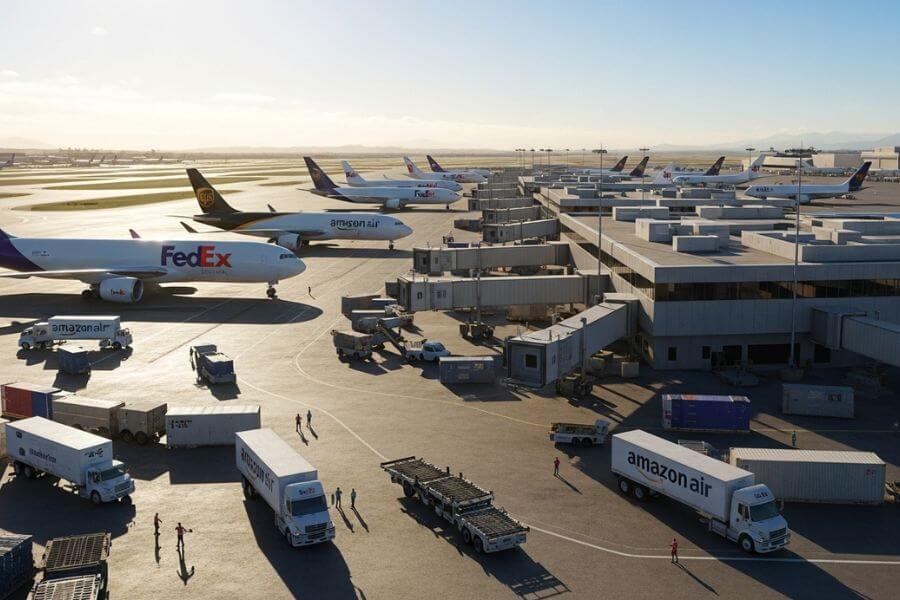Trade between the United States and Mexico is one of the most important economic relationships in the world. As two nations deeply connected through geography, supply chains, manufacturing partnerships, and the USMCA framework, the U.S.-Mexico trade corridor continues to grow year after year. Whether you’re a logistics professional, a business owner exploring import/export opportunities, or simply curious about cross-border trade, understanding what goods move most frequently between the two countries offers valuable insight into market demand and economic trends.
In this article, we’ll break down the top 10 most traded goods between the U.S. and Mexico, explain why these goods dominate bilateral trade, and explore how they influence North American commerce. From automotive parts to agricultural products, each category plays a key role in shaping the modern supply chain.
1. Motor Vehicles & Auto Parts
Motor vehicles and auto parts consistently rank as the most traded category between the U.S. and Mexico due to the deeply integrated automotive supply chain across North America. Cars manufactured in the U.S. and Mexico often cross borders seven to eight times before final assembly, making this sector central to bilateral trade. The U.S. exports engines, transmissions, and advanced electronics to Mexico, which then assembles vehicles or key components that are re-imported back into the U.S. for final distribution.
Mexico has become a global automotive manufacturing powerhouse thanks to its skilled workforce and competitive production costs, leading companies such as Ford, GM, Stellantis, and Volkswagen to maintain major operations there. In turn, U.S.-based automotive suppliers rely on Mexico for parts, modules, and complete vehicles ranging from pickups to SUVs. This partnership supports millions of jobs across both countries and remains the backbone of USMCA-driven manufacturing growth.
2. Machinery & Mechanical Appliances
Heavy machinery, industrial equipment, and mechanical appliances are also among the most traded goods between the United States and Mexico. These include items such as turbines, manufacturing machinery, electrical generators, specialized tools, HVAC equipment, and industrial engines used in everything from construction to factory automation.
The U.S. exports high-tech machinery used for manufacturing, energy, and commercial industries, while Mexico manufactures various machinery components that supply U.S. factories. As both countries continue to expand manufacturing capabilities, especially in aerospace, energy infrastructure, logistics automation, and advanced industrial processes, trade in machinery continues to surge.
The integration of cross-border industrial supply chains, plus the growth of nearshoring in Mexico, has made the movement of machinery vital for competitive production throughout North America.
3. Electrical Machinery, Electronics & Components
Electrical machinery and electronic components form one of the fastest-growing categories in U.S.-Mexico trade. The electronics industry includes semiconductors, circuit boards, wiring harnesses, telecommunications equipment, household electronics, and components used in everything from smartphones to automotive infotainment systems.
Mexico’s northern states, especially Baja California, Chihuahua, and Nuevo León, are major hubs for electronics manufacturing. Companies such as Samsung, LG, and Sony have invested heavily in Mexican production facilities that supply U.S. markets. At the same time, the U.S. supplies Mexico with high-value electronic components, semiconductor technology, and specialized testing equipment needed for advanced electronics assembly.
As global companies shift electronics production closer to North American consumers, trade in this sector continues to increase rapidly.
4. Agricultural Goods (Fruits, Vegetables, Grains & More)
Agriculture is one of the most essential pillars of U.S.-Mexico trade. The U.S. imports large quantities of fresh fruits and vegetables from Mexico, including tomatoes, avocados, berries, peppers, and cucumbers, due to Mexico’s climate advantages and year-round growing seasons. Mexico is the largest foreign supplier of fresh produce to American grocery stores.
In return, the United States exports grains, corn, soybeans, dairy, beef, and processed foods to Mexico. Because Mexico relies heavily on U.S. agricultural commodities for feeding livestock, producing food products, and supporting agro-industries, the trade relationship between the two countries is highly complementary.
With consumer demand for fresh produce, organic foods, and sustainable agricultural products growing, cross-border agricultural trade remains one of the most stable and robust categories.
5. Petroleum, Crude Oil & Energy Products
Energy products, including crude oil, refined petroleum, natural gas, and specialized fuel, make up a significant portion of trade between the U.S. and Mexico. Historically, Mexico has exported crude oil to the U.S., while the U.S. exports refined petroleum products such as gasoline and diesel back to Mexico, which relies on U.S. refineries to meet domestic fuel needs.
In addition, natural gas pipelines connecting Texas and northern Mexico allow the U.S. to supply Mexico with affordable energy for electricity generation and industrial manufacturing. As Mexico continues to modernize and expand its energy infrastructure, U.S. exports of liquefied natural gas (LNG), refined fuel products, machinery for energy production, and renewable-energy components are increasing.
Energy trade between the two countries ensures industrial growth, supply-chain reliability, and competitive fuel pricing across North America.
6. Medical Instruments & Healthcare Supplies
Medical instruments, pharmaceutical products, and healthcare supplies are vital components of U.S.-Mexico trade. Mexico is a major exporter of medical devices such as surgical instruments, dental equipment, disposable health supplies, and orthopedics. The U.S., in turn, supplies Mexico with advanced medical technology, pharmaceutical products, and research-grade equipment.
Manufacturing clusters in states like Baja California have become global leaders in medical device production due to high-quality standards and competitive labor costs. This integration allows American hospitals, clinics, and healthcare providers to obtain cost-effective, reliable medical products.
The COVID-19 pandemic accelerated long-term growth in this sector, solidifying medical equipment as one of the top traded categories.
7. Plastics & Plastic Articles
Plastics and related articles, such as polymer resins, packaging materials, industrial plastics, plastic parts, containers, and components, are heavily traded between the U.S. and Mexico. The U.S. exports raw plastic materials and resins used in Mexican manufacturing plants, while Mexico exports finished plastic products back to the U.S. for use in automotive, packaging, consumer goods, construction, and medical industries.
Mexico’s growing plastics industry benefits from its proximity to the U.S. chemical and petroleum sector, particularly major producers in Texas and Louisiana. As reshoring and nearshoring trends strengthen supply-chain optimization, demand for cross-border plastics continues to increase.
8. Iron, Steel & Metal Products
Iron and steel products, including sheet metal, bars, wire, pipes, construction materials, and industrial components, play an important role in U.S.-Mexico trade. These materials are foundational to manufacturing, infrastructure, and construction across both countries.
The U.S. exports specialized steel, metal components, and industrial alloys, while Mexico exports fabricated metal parts and finished goods used in automotive manufacturing, home appliances, tools, and machinery. Mexico’s robust manufacturing base relies heavily on U.S. metals, and American companies benefit from Mexico’s ability to produce assembled metal components efficiently.
With infrastructure investment expanding across North America, the metal trade remains strong year after year.
9. Textiles, Apparel & Footwear
Textiles and apparel continue to be a major category in U.S.-Mexico trade, although the market has shifted significantly in recent decades. Mexico produces garments, fabrics, denim, footwear, and textile components that are exported to U.S. retail brands. The United States exports high-quality cotton, yarn, and textile machinery to support Mexico’s apparel manufacturing industry.
Cross-border apparel production allows U.S. brands to maintain flexible supply chains and faster delivery times compared to overseas sourcing from Asia. As consumer demand for ethically produced, near-shore apparel increases, Mexico’s textile industry remains a critical supplier to the U.S. market.
10. Furniture, Appliances & Manufactured Goods
Furniture, appliances, and other manufactured consumer goods round out the top 10 most traded categories. Mexico is one of the largest suppliers of furniture and home appliances to the U.S., exporting products such as refrigerators, washing machines, stoves, sofas, office furniture, and home décor items. These goods benefit from Mexico’s robust manufacturing infrastructure and proximity to American retailers.
The U.S. exports wood products, hardware, electronics, and industrial components used in Mexican furniture and appliance manufacturing. As home renovation, e-commerce, and consumer demand continue to rise, this category shows consistent year-over-year growth.
Conclusion
The trade partnership between the United States and Mexico is one of the most interconnected and dynamic in the world. From automotive supply chains to fresh produce and advanced electronics, these top 10 traded goods demonstrate the depth of cross-border cooperation and the importance of nearshoring in modern manufacturing.
As the USMCA strengthens regional competitiveness and companies continue shifting production closer to home, trade volume between the U.S. and Mexico will only grow. Logistics providers, importers, exporters, and manufacturers all benefit from understanding these key product categories, helping them make smarter business decisions in an increasingly global but regionally integrated economy.

